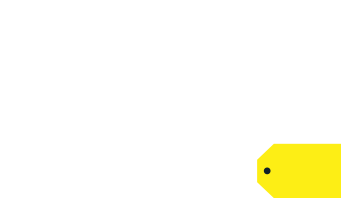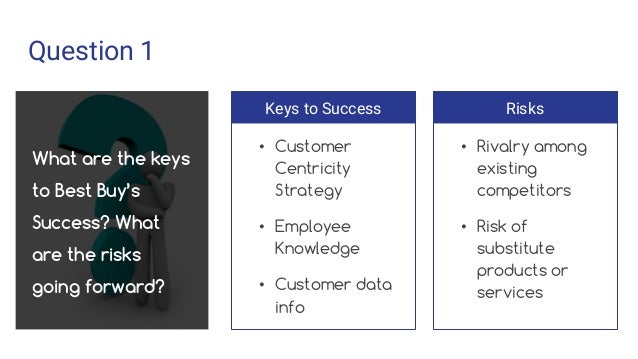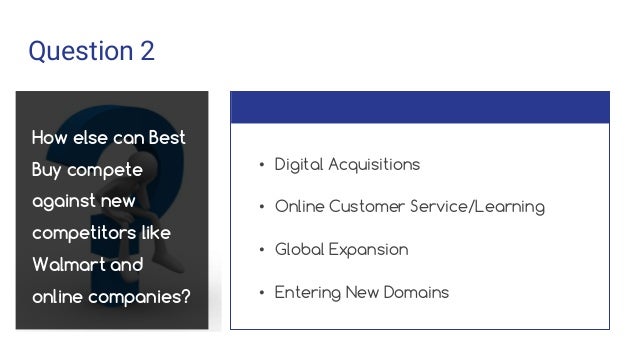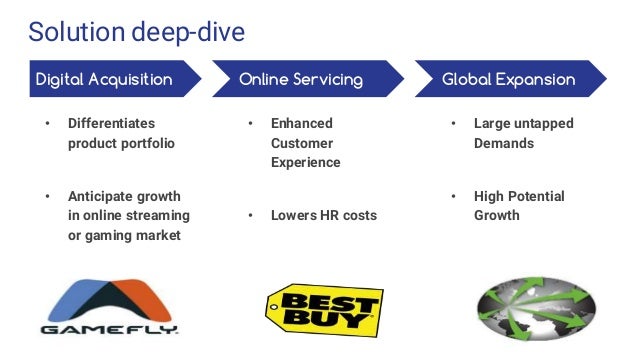1. Beginnings of Best Buy
- . In 1966, Richard M. Schulze and a business partner opened Sound of Music, an electronics store specializing in high fidelity stereos in Saint Paul, Minnesota. Schulze financed the opening of his first store with his personal savings and a second mortgage he took out on his family’s home. In 1967, Sound of Music acquired Kencraft Hi-Fi Company and Bergo Company. Sound of Music pulled in $1 million in revenue and made about $58,000 in profits in its first year.
- . In 1983, with seven stores and $10 million in annual sales, Sound of Music was renamed Best Buy Company, Inc. The company also expanded its product offerings to include home appliances and VCRs, in an attempt to expand beyond its then-core customer base of 15-to-18-year-old males.
- . In 1989, the company introduced a new store concept dubbed “Concept II.” Concept II replaced dimly lit industrial-style stores with brighter and more fashionably fixtured stores. Stores also began placing all stock on the sales floor rather than in a stock room, had fewer salespersons and provided more self-help product information for its customers. Best Buy also did away with commissioned salespeople.
- . Brad Anderson succeeded Richard Schulze as Best Buy CEO in July 2002. Anderson had begun working at Best Buy in 1973 while attending seminary school. He was promoted to vice president in 1981 and executive vice president in 1986. Anderson had most recently served as president and COO of Best Buy, a position he had held since 1991.
- . Throughout this years, Faced by challenges from Walmart and Amazon.
- . To overcome the problems faced "The five—point plan" was
introduced.
They called this plan "Renew Blue." Here are the key points.
1. Reinvigorate the customer experience. Best Buy's plans include offering customers unique benefits and exclusive membership programs, and continuing to develop a "leading edge, multi-channel shopping experience through a highly relevant and contemporized hub-and-spoke network."
2. Attract and grow "transformational leaders" and energize employees to deliver "extraordinary results."
3. Work with vendors to innovate and "drive value."
4. Increase the company's return on invested capital by growing revenue and efficiency. This includes cutting "unproductive" costs, such as administrative and non-product expenses.
5. Making the world a better place through recycling effort and providing teenagers with access to technology.
⇦ Back
SWOT Anslysis of Best Buy Inc.
1.Strengths
- Market Leader in North America.
- Brand Loyalty and Reputation.
- High Customer Rechability.
- Huge Product Line.
- Service Plan.
- Warranty Policy.
- Competitive Price.
- Geek Squad Support.
2.Weakness
- Brand not popular outside the USA.
- High competition e.g. Amazon, Walmart.
- Price reduction.
- Controversy.
3.Opportunities
- Online media.
- Global visibility.
- More stores.
- Emergent new technology.
- The Necessity of electronics.
4.Threats
- Tough online competition.
- Auction sites.
- Change in government policies
- Electronics sold in the US.
⇦ Back
SWOT Anslysis of Best Buy Inc.
1.Business Segments
- Domestic, which comprises the Company’s operations across all states, districts and territories of the US, under its various brand names, such as Best Buy, bestbuy.com, Best Buy Mobile, Best Buy Direct, Best Buy Express, Geek Squad, Magnolia Home Theater, and Pacific Kitchen and Home.
- International, comprising all of the Company’s operations in Canada and Mexico under the brand names Best Buy, bestbuy.com.ca, bestbuy.com.mx, Best Buy Express, Best Buy Mobile, and Geek Squad.
The story of an (almost) disrupted business.
2.Business model of Best Buy
3.Customer Segments
- Small business customer who has specific needs related to growing sales and increasing the profitability of his or her business.
- Affluent professionals who are looking for the best technology and entertainment products, and demands excellent service;
- Family men who are looking for technology that will improve their lives and that will last.
- Busy suburban mothers; and
- Young consumers who are active early-adopters.
4.Value Propositions
- The quality of its customer service, with the Company providing personal assistance to customers through its knowledgeable in-house sales staff;
- Its competitive pricing and discount deals, with the Company offering products at reasonable prices, as well as offering deals and discounts, including weekly and daily deals;
- Its broad sales reach across North America, with the Company operating a network of 1,200 large-format and 400 small-format stores, principally in the US, as well as in Mexico and Canada;
- Its technical support offerings, with the Company providing expert, in-person technical assistance to its customers through its Geek Squad agents and service centres; and
- Its accessible digital channels, with the Company operating online and mobile channels that enable customers to purchase products and services on the move.
5.Revenue Streams
-
Consumer Electronics, including home theatre, home automation, digital imaging, health and fitness, and portable audio products;
-
Computing and Mobile Phones, including computing and peripherals, networking, tablets, mobile phones, wearables, and e-readers;
-
Entertainment, including gaming hardware and software, movies, music, and other software;
-
Appliances, including large appliances such as refrigerators, dishwashers, and ovens, and small appliances such as, coffee makers and blenders;
-
Services, including consultation, design, delivery, installation, set-up, protection plans, repair, technical support and educational classes; and
- Other, including snacks, beverages and other sundry items.
6.Redefine How Best Buy Makes Money
- Stores-within-store strategy
We continue to partner with our vendors (i.e., the world’s foremost technology companies) to help them commercialize their technology. Over the last seven years, our vendors have invested with us to improve the customer experience through stores within-stores and other unique vendor experiences. We ended fiscal 2019 with more than 5,000 of these experiences across our U.S. stores.
⇦ Back




